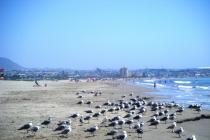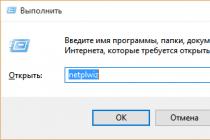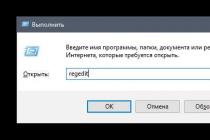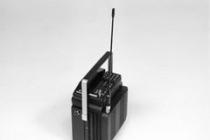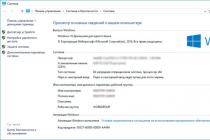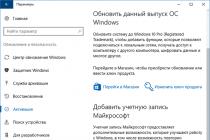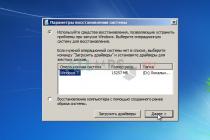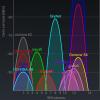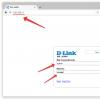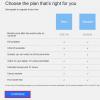Test on the topic "Models and Simulation"
Option 1
1. The model is the replacement of the studied object by another object, which reflects:
a) all sides of this object;
b) some aspects of this object;
c) essential aspects of the given object;
d) insignificant aspects of the given object.
2. The result of the formalization process is:
a) a descriptive model; c) graphic model;
b) mathematical model; d) subject model.
3. The information model for organizing lessons at school is:
a) a set of rules for student behavior; c) schedule of lessons;
b) the list of the class; d) a list of textbooks.
4. The material model is:
a) aircraft layout; c) drawing;
b) map; d) diagram.
5. The genealogical tree of the family is:
b) hierarchical information model;
c) network information model;
d) verbal information model.
a) anatomical dummy; c) ship model;
b) the layout of the building; d) diagram.
7. Indicate in the modeling of the research process temperature regime room modeling object:
b) study of the temperature regime of the room;
c) room;
d) temperature.
8. The correct order of the indicated stages of mathematical modeling of the process:
1) analysis of the result; 3) defining the goals of modeling;
2) conducting research; 4) search for mathematical description.
Matches the sequence:
a) 3 - 4 - 2 - 1; c) 2 - 1 - 3 - 4;
b) 1 - 2 - 3 - 4; d) 3 - 1 - 4 - 2;
9. How many objects does the system usually consist of?
a) from several; c) from an infinite number;
b) from one; d) it is not divisible.
10. What is the name of the graph designed to display nesting, subordination, inheritance, etc. between objects?
a) scheme; c) a table;
b) the network; d) tree.
11. Oral presentation of the information model is called:
a) a graphic model; c) tabular model;
b) verbal model; d) logical model.
12. The ordering of information on a specific basis is called:
a) sorting; c) systematization;
b) formalization; d) modeling.
Option 2
1. What is the name of a simplified representation of a real object?
a) original; c) model;
b) prototype; d) system.
2. The process of building models is called:
a) modeling; c) experimentation;
b) construction; d) design
3. Information model consisting of rows and columns is called:
a) table; c) scheme;
b) schedule; d) drawing.
4. What is the common name for models, which are a collection of useful and necessary information about an object?
a) material; c) subject;
b) informational; d) verbal.
5. The circuit diagram is:
a) tabular information model;
b) hierarchical information model;
c) a graphical information model;
d) verbal information model
6. The iconic model is:
a) map; c) globe;
b) children's toys; d) the layout of the building.
7. Indicate in the simulation of the study of the temperature regime of the room the purpose of the simulation:
a) convection of air in the room;
b) study of the temperature regime of the room;
c) room;
d) temperature.
8. The correct definitions of the concepts are given in paragraphs
1) the modeled parameter - the signs and properties of the object - the original, which the model must necessarily have;
2) a modeled object - an object or a group of objects, the structure or behavior of which is investigated using modeling;
3) law - the behavior of the modeled object.
a) 1 - 2 - 3; c) 1 - 3;
b) 2 - 3; d) 1 - 2.
9. The tool for computer modeling is:
a) scanner; c) printer;
b) computer; d) monitor.
10. What is the name of the tool for visualizing the composition and structure of the system?
a) table; c) text;
b) graph; d) drawing.
11. What are the names of the models in which a decision is made based on the analysis of various conditions?
a) verbal; c) tabular;
b) graphic; d) logical.
12. Solving the problem of automating ticket sales requires the use of:
a) graphic editor; c) operating system;
b) a text editor; d) programming language.
Lesson summary on the topic
"Types of information models"
- educational: master the tabular and hierarchical form of presentation of the information model;
- educational: the formation of independence and responsibility in the study of new material;
- developing: to develop the ability to describe information models, highlighting the significant goals of modeling.
Software - didactic support of the lesson: PC, projector, screen, cards with the test and assignments.
Lesson type: learning new material.
During the classes:
- Org. moment: 2 min.
- greetings;
- checking those present.
- Updating previous knowledge: 10 min
Test (2 options)
Option 1
1. The model is the replacement of the studied object by another object, which reflects:
- all sides of a given object;
- some aspects of this object;
- essential aspects of this object;
- insignificant aspects of this object.
2. The result of the formalization process is:
- descriptive model;
- mathematical model;
- graphic model;
- subject model.
3. The information model for organizing lessons at school is:
- a set of rules for student behavior;
- class list;
- timetable;
- list of textbooks.
4. The material model is:
- airplane model;
- map;
- drawing;
- diagram.
5. The iconic model is:
- anatomical dummy;
- layout of the building;
- ship model;
- diagram.
6. Indicate the object of modeling in the modeling of the process of studying the temperature regime of the room:
- convection of air in the room;
- room;
- temperature.
7. The correct order of the indicated stages of mathematical modeling of the process:
1) analysis of the result;
2) conducting research;
3) defining the goals of modeling;
4) search for mathematical description.
Matches the sequence:
3-4-2-1;
1-2-3-4;
2-1-3-4;
3-1-4-2.
8. How many objects does the system usually consist of?
- from several;
- from one;
- from an infinite number;
- it is indivisible.
9. What is the name of the graph designed to display nesting, subordination, inheritance, etc. between objects?
- scheme;
- network;
- table.
- tree;
10. Oral presentation of the information model is called:
- graphic model;
- verbal model;
- mathematical model;
- logical model.
11. The ordering of information on a specific basis is called:
- sorting;
- formalization;
- systematization;
- modeling.
Option 2
1. What is the name of the simplified representation of a real object?
- original;
- prototype;
- model;
- system.
2. The process of building models is called:
- modeling;
- design;
- experimentation;
- design.
3. An information model consisting of rows and columns is called:
- table;
- schedule
- scheme;
- drawing.
4. What is the general name of the models that represent a collection of useful and the information you need about the object?
- material;
- subject;
- informational;
- verbal.
5. The iconic model is:
- map;
- Kids toys;
- globe;
- layout of the building.
6. Indicate in the simulation of the study of the temperature regime of the room the purpose of the simulation:
- convection of air in the room;
- study of the temperature regime of the room;
- room;
- temperature.
7. The correct definitions of the concepts are given in paragraphs
1) the modeled parameter - the characteristics and properties of the original object, which the model must necessarily possess;
2) modeled object - an object or a group of objects, the structure or behavior of which is investigated using modeling;
3) law - the behavior of the modeled object.
- 1-2-3;
8. The tool for computer modeling is:
- scanner;
- a computer;
- a printer;
- monitor.
9. What is the name of the tool for visualizing the composition and structure of the system?
- table;
- graph;
- text;
- drawing.
10. What are the names of the models in which a decision is made based on the analysis of various conditions?
- verbal;
- graphic;
- mathematical;
- brain teaser.
11. Building a model in a formal language is called:
- sorting;
- formalization;
- systematization;
- modeling.
III. Learning new material: 20 min
Lesson topic message.
Let's analyze this life situation: you need to purchase a mobile phone. When buying, what do you pay attention to first of all (appearance)? What information matters?
it full information about the object? What is the best form of presenting information about appearance phone?
What else do you pay attention to when buying a phone (phone function? What information does it matter?
The information is presented in the form of a table.
Parameter |
Parameter value |
Price |
|
Infrared port |
|
Talk time |
|
Vibrating alert |
|
Is this table the best way to represent the functionality of the phone?
In this example, two tabular models of one real object are built - a mobile phone. The first model is convenient in graphical representation, and the second in tabular representation. When building a tabular information model, the purpose of the model is of particular importance.
With the help of tables, information models are built in various subject areas, eg, in mathematics - multiplication table, chemistry periodic table, timetable of lessons, trains. For example, a tabular model of the cost of individual computer devices. The first column of the table contains a list of objects (devices that make up the computer, and the second - their price. Give an example of a tabular information model?
In a tabular information model, a list of objects or properties of the same type is located in the first column (or row) of the table, and the value of their properties in the following columns (or rows in the table).
An object class is a set of objects united by some common properties.
Properties - characteristics, attributes of an object.
Each property has a name and value.
Find the Object Class, Object Properties from the following tables.
Annual estimates
Build a tabular model using positional number systems.
Back forward
Attention! Slide previews are for informational purposes only and may not represent all presentation options. If you are interested this work please download the full version.
Lesson objectives:
- To form in students the concept of formalization, an information model. Teach how to build a tabular information model using spreadsheets and render the model.
- To develop the research competence of students while formalizing the model through structuring educational material using spreadsheets.
- For weak learners: Awaken interest in the modeling process through the use of feasible tasks, educational software tools allowing the student to work in accordance with his individual abilities.
- For secondary students: Develop a sustained interest in the subject through the construction of tabular models.
- For strong learners: Develop a strong interest in the modeling process through solving various problems in Excel.
- Contribute to the enrichment of the inner world of students, increase interest in the study of the subject, foster a culture of behavior and computer literacy.
Didactic software: PC, software: Excel, PowerPoint, MS Word, Internet, cards with assignments, interactive whiteboard, presentation.
Requirements for knowledge and skills:
Students should know:
- What is a model, modeling, formalization;
- The main stages of building a tabular model.
Students should be able to:
- Structure information using spreadsheets;
- Visualize the model using diagrams.
During the classes
I. Org. moment.
II. Updating previous knowledge:
1. Students take an electronic test in two versions and saved in their folders.
Option 1
1) The model is the replacement of the studied object by another object, which reflects:
- all sides of a given object;
- some aspects of this object;
- essential aspects of this object;
- insignificant aspects of this object.
2) The information model for organizing lessons at school is:
- a set of rules for student behavior;
- class list;
- timetable;
- list of textbooks.
3) The material model is:
- airplane model;
- map;
- drawing;
- diagram.
4) Indicate in the modeling of the process of studying the temperature regime of the room the object of modeling
- convection of air in the room;
- room;
- temperature;
5) Oral presentation of the information model is called:
- graphic model;
- verbal model;
- mathematical model;
- logical model.
Option 2
1) What is the name of the simplified representation of a real object?
- original;
- prototype;
- model;
- system.
2) The process of building models is called:
- modeling;
- design;
- experimentation;
- design.
3) An information model consisting of rows and columns is called:
- table;
- schedule
- scheme;
- drawing.
4) What is the general name for models, which are a collection of useful and necessary information about an object?
- material;
- subject;
- informational;
- verbal.
5) Indicate the purpose of the simulation in the simulation of the study of the temperature regime of the room:
- convection of air in the room;
- study of the temperature regime of the room;
- room;
- temperature.
2. Explain what a model is, modeling. Provide examples of training models. What is the material model? What is an information model?
3. Complete the task on the interactive whiteboard:
Fill the table:
III. New topic:
Using multimedia support. Problematic question "How can information models be displayed using a computer?" Let's try to find out today.
A person has long been using modeling to study objects, processes, phenomena (hereinafter we will call all these objects of modeling) in various fields. Throughout its history, humanity has used various methods and tools to create information models. These methods have been constantly improved. Thus, the first information models were created in the form of rock paintings. Currently, information models are usually built and investigated using modern computer technology.
The first stage of any research is the formulation of a problem, which is determined by a given goal. The problem is formulated in ordinary language. By the nature of the formulation, all tasks can be divided into two main groups. The first group includes tasks in which it is required to investigate how the characteristics of an object will change under some influence on it, "what will happen if? ...". The second group of tasks: what effect should be made on the object so that its parameters satisfy a certain given condition, “how to do it so that? ..”.
The second stage is the analysis of the object. The result of the analysis of an object is the identification of its constituents (elementary objects) and the determination of connections between them.
The third stage is the development of an information model of the object. The building of the model must be related to the purpose of the simulation. Each object has many different properties. In the process of building a model, the main, most essential, properties are highlighted that correspond to the goal.
All that was said above is formalization, that is, replacing a real object or process with its formal description, i.e. its information model. How does this happen?
Examples from mathematics, physics, chemistry, geography, music, etc.
Water molecule information model
Word model:"A water molecule consists of an oxygen atom and two hydrogen atoms."
Geometric model:

Chemical model: H 2 O
Right triangle information model
Word model:"A right-angled triangle is a triangle that has one of the corners of a straight line."
Geometric model:

Mathematical model: <А+<В+<С=180° , АВ 2 =АС 2 +ВС 2
I would like to draw your attention to the mathematical model. It is written in mathematical language or formal language. You and I know that there are natural and formal languages. Natural languages are used to create descriptive information models. Formal information models (mathematical, logical, etc.) are built with the help of formal languages. One of the most widely used formal languages is mathematics. Models built using mathematical concepts and formulas are called mathematical models. However, in some cases, specialized formal languages are used (in chemistry - the language of chemical formulas, in music - musical notation, etc.)
The process of building information models using formal languages is called formalization.
Modeling any system is impossible without preliminary formalization. In fact, formalization is the first and very important stage of the modeling process.
In the process of studying formal models, their visualization is often used. For visualization of algorithms, block diagrams are used, spatial relationships between objects - drawings, models of electrical circuits - electrical circuits. When visualizing formal models with the help of animation, the dynamics of the process can be displayed, graphs of changes in quantities can be plotted, etc. Example on the slide .
To reflect systems with different structures, the following types of information models are used: tabular, hierarchical, network.
One of the most common forms of presentation of information models are tables. Very often information is presented in tabular form in various documents, reference books, textbooks. With the help of tables, information models are built in various subject areas, eg, in mathematics - multiplication table, chemistry periodic table, timetable of lessons, trains.
Tabular - objects and their properties are presented in the form of a list, and their values are placed in rectangular cells. The list of objects of the same type is located in the first column (or row), and the values of their properties are placed in the following columns (or rows).
Let's analyze this life situation: you need to purchase a mobile phone. When buying, what do you pay attention to first of all (appearance)? What information matters?
The information is presented in the form of a table.
Is this complete information about the object? What is the best form of presenting information about the appearance of a phone? What else do you look for when buying a phone (phone function)? What information matters? The information is presented in the form of a table.
|
Parameter |
Parameter value |
Price |
|
Infrared port |
|
Talk time |
|
Vibrating alert |
|
Is this table the best way to represent the functionality of the phone? In this example, two tabular models of one real object are built - a mobile phone. The first model is convenient in graphical representation, and the second in tabular representation. When building a tabular information model, the purpose of the model is of particular importance.
Thus, the tabular form gives conciseness and clarity to the data, structures the data, allows you to see patterns in the nature of the data.
An important role is played by information models that display hierarchical systems ... In biology, the entire animal world is considered as a hierarchical system (type, class, order, family, genus, species), in computer science, a hierarchical file system is used, a classification of computers. To describe the historical process of changing generations of a family, dynamic information models in the form of a family tree are used. As an example, we can consider a fragment (X - XI) century of the genealogical tree of the Rurik dynasty. In a hierarchical model, objects are arranged in levels. Each higher-level item can contain several lower-level items, while each lower-level item can be part of only one top-level item.
Graphs are a convenient way to visualize hierarchical information models. Elements of the hierarchical model are displayed in the graph by ovals (graph vertices). Graphs that have one top-level vertex resemble trees that grow from top to bottom, which is why they are called trees. As an example, consider a fragment of the family tree of the Rurik dynasty.
Let's schematically represent the following description:“Natural resources by reserves are divided into exhaustible and inexhaustible. Exhaustible resources are non-renewable and renewable. In addition, according to their purpose, natural resources are divided into multipurpose, industrial, agricultural ”. (Slide)
Now let's present this information in the form of a hierarchy.

Network information models – used to reflect systems in which the connections between elements have a complex structure. An example of network models is, for example, various regional parts of the global computer network Internet (American, European, Russian, Australian, and so on) are interconnected by high-speed communication lines. At the same time, some parts (for example, American) have direct connections with all regional parts of the Internet, while others can exchange information with each other only through the American part (for example, Russian and Australian). The nodes of the graph are regional networks. The connections between the vertices are bilateral in nature and therefore are depicted by non-directional lines ( ribs), and the graph itself is therefore called undirected.
IV. Anchoring:
Objective 1.
Build a tabular model using positional number systems.
What is a number system? What are the two classes of number systems?
What is the difference between a positional number system and a non-positional one?
Notation |
Base |
Alphabet numbers |
Binary |
||
Decimal |
0,1,2,3,4,5,6,7,8,9 |
|
Octal |
||
Hexadecimal |
0,1,2,3,4,5,6,7,8,9, A, B, C, D, E, F |
Let us build a hierarchical model based on knowledge about the graph for the above example. What is a graph, graph vertices, arcs?
What is the top?
Objective 2.
A verbal description of such a phenomenon as the growth of the world's population is given. Build models that would help to visualize this phenomenon.
Studies have shown that humanity as a single system has existed for more than a million years. The development of this system can be judged by the change in its key parameters. One of these parameters is the number of people on Earth.
In 1000 there were 305 million people in the world, in 1500 - 440 million, in 1800 - 950 million, in 1900 - 1 billion 660 million, in 1950 - 2 billion 530 million, in 1980 - 4 billion 430 million, in 1990 - 5 billion 290 million, in 2000 - 6 billion 250 million

Objective 3.
The next column shows the possible blood transfusion system. Indicate what kind of blood a person with the first blood group, with the second, with the third, with the fourth blood group can receive.

Problem 4.
Determine which of the five servers is the hub? (Student responses)
The solution is very simple: since, according to this definition, the nodal server is the one with which all other servers are directly connected, then in the matrix you need to search for a row consisting of only ones. This line is C4. This means that the C4 server is the nodal one. As an additional task, I propose to draw this computer network, depicting the servers with circles, and the connections between them with lines. Now we are convinced that the tabular information model allows you to analyze information faster.
Test on the topic "Models and Simulation"
Option 1
1. The model is the replacement of the studied object by another object, which reflects:
a) all sides of this object;
b) some aspects of this object;
c) essential aspects of the given object;
d) insignificant aspects of the given object.
2. The result of the formalization process is:
a) a descriptive model; c) graphic model;
b) mathematical model; d) subject model.
3. The information model for organizing lessons at school is:
a) a set of rules for student behavior; c) schedule of lessons;
b) the list of the class; d) a list of textbooks.
4. The material model is:
a) aircraft layout; c) drawing;
b) map; d) diagram.
5. The genealogical tree of the family is:
b) hierarchical information model;
c) network information model;
d) verbal information model.
a) anatomical dummy; c) ship model;
b) the layout of the building; d) diagram.
b) study of the temperature regime of the room;
c) room;
d) temperature.
8. The correct order of the indicated stages of mathematical modeling of the process:
1) analysis of the result; 3) defining the goals of modeling;
2) conducting research; 4) search for mathematical description.
Matches the sequence:
a) 3 - 4 - 2 - 1; c) 2 - 1 - 3 - 4;
b) 1 - 2 - 3 - 4; d) 3 - 1 - 4 - 2;
9. How many objects does the system usually consist of?
a) from several; c) from an infinite number;
b) from one; d) it is not divisible.
10. What is the name of the graph designed to display nesting, subordination, inheritance, etc. between objects?
a) scheme; c) a table;
b) the network; d) tree.
11. Oral presentation of the information model is called:
a) a graphic model; c) tabular model;
b) verbal model; d) a logical model.
12. The ordering of information on a specific basis is called:
a) sorting; c) systematization;
b) formalization; d) modeling.
Option 2
1. What is the name of a simplified representation of a real object?
a) original; c) model;
b) prototype; d) system.
2. The process of building models is called:
a) modeling; c) experimentation;
b) construction; d) design
3. An information model consisting of rows and columns is called:
a) table; c) scheme;
b) schedule; d) drawing.
4. What is the common name for models, which are a collection of useful and necessary information about an object?
a) material; c) subject;
b) informational; d) verbal.
5. The circuit diagram is:
a) tabular information model;
b) hierarchical information model;
c) a graphical information model;
d) verbal information model
6. The iconic model is:
a) map; c) globe;
b) children's toys; d) the layout of the building.
7. Indicate in the simulation of the study of the temperature regime of the room the purpose of the simulation:
a) convection of air in the room;
b) study of the temperature regime of the room;
c) room;
d) temperature.
8. The correct definitions of the concepts are given in paragraphs
1) the modeled parameter - the signs and properties of the object - the original, which the model must necessarily have;
2) modeled object - an object or a group of objects, the structure or behavior of which is investigated using modeling;
3) law - the behavior of the modeled object.
a) 1 - 2 - 3; c) 1 - 3;
b) 2 - 3; d) 1 - 2.
9. The tool for computer modeling is:
a) scanner; c) printer;
b) computer; d) monitor.
10. What is the name of the tool for visualizing the composition and structure of the system?
a) table; c) text;
b) graph; d) drawing.
11. What are the names of the models in which a decision is made based on the analysis of various conditions?
a) verbal; c) tabular;
b) graphic; d) logical.
12. Solving the problem of automating ticket sales requires the use of:
a) graphic editor; c) operating system;
b) a text editor; d) programming language.
Crossword on the topic "Models and Simulation"
Horizontally:
1. Some subject.
2. Description of the model using a formal language.
3. A graph designed to display nesting, subordination, inheritance, etc. between objects.
4. The generic name for models that can be touched.
5. Tool for computer modeling.
6. The general name of models, which are a collection of useful and necessary information about an object.
Vertically:
7. Information model, consisting of rows and columns.
8. Means for visual representation of the composition and structure of the system.
9. The process of building models.
10. graph showing the sequence of actions.
11. Simplified representation of a real object, process or phenomenon.
Answers:
Horizontally:
1. object; 2. formalization; 3.tree; 4. material; 5. computer; 6. informational.
Vertically:
7.table; 8. count; 9. modeling; 10. scheme; 11.model.
Grade 11
Lesson topic: Statistics. Statistical data. Building regression models using a spreadsheet processor.
Goals: Teach students to create and explore information models using spreadsheets.
Requirements for knowledge and skills:
Students should know:
Simulation stages;
stages of obtaining regression models.
Students should be able to:
Simulate in compliance with all stages;
Work in MS Excel application.
Software and methodological support: PC, MS Excel spreadsheets.
During the classes:
Org. moment(greeting, preparation of the workplace, boarding of students).
Lesson objectives: today in the lesson we must learn how to create models that describe the relationship between the quantitative characteristics of statistical data.
Lesson Objective: to construct the most suitable model based on the offered statistical data.
Lesson topic: Statistical data. Building regressive models.
Repetition of the material studied.
Target: Knowledge control.
Method: testing.
Option 1
1. The model is the replacement of the studied object by another object, which reflects:
A) all sides of a given object;
B) some aspects of this object;
B) essential aspects of the given object;
D) insignificant aspects of this object.
2. The result of the formalization process is:
A) a descriptive model;
B) graphic model;
B) mathematical model;
D) subject model.
3.
The information model for organizing classes at school is:
A) a set of rules for student behavior
C) schedule of lessons;
B) class list;
D) a list of textbooks.
4. The material model is:
A) model of the aircraft;
B) drawing;
B) map;
D) diagram.
5. The genealogical tree of the family is:
B) network information model;
A) anatomical dummy;
C) ship model;
B) the layout of the building;
D) diagram.
7. Indicate in the modeling of the study of the temperature regime of the room
modeling object:
A) convection of air in the room;
B) room;
B) the study of temperature
D) temperature, room mode;
8. The correct order of the indicated stages of mathematical modeling of the process:
analysis of the result;
defining modeling goals;
conducting research;
search for mathematical description.
Matches the sequence:
A) 3-4-2-1;
B) 2 - 1 - 3 - 4;
B) 1 - 2 - 3 - 4;
D) 3-1-4-2.
nine . How many objects does a system typically consist of?
A) from several;
B) from an infinite number;
B) from one;
D) it is not divisible.
10. What is the name of the graph designed to display nesting, subordination,
inheritance, etc. between objects?
A) scheme;
C) a table.
B) the network;
D) a tree;
11.
An oral presentation of the information model is called:
A) a graphic model;
C) tabular model;
B) verbal model;
D) a logical model.
12.
The ordering of information on a specific basis is called:
A) sorting;
C) systematization;
B) formalization;
D) modeling.
(Answers: 1-c, 2-b, 3-c, 4-a, 5-b, 6-d, 7-d, 8-a, 9-a, 10-b, 11-b, 12-a )
Option 2
1 . What is the name of a simplified representation of a real object?
A) original;
B) model;
B) prototype;
D) system.
2. The process of building models is called:
A) modeling;
C) experimentation;
B) design;
D) design.
3.
An information model made up of rows and columns is called:
A) table;
B) the scheme;
B) schedule;
D) drawing.
4. What is the general name of the models that represent a collection of useful and
necessary information about the object?
A) material;
C) subject;
B) informational;
D) verbal.
5. The circuit diagram is:
A) tabular information model;
B) hierarchical information model;
B) a graphical information model;
D) verbal information model.
6. The iconic model is:
A) map;
B) a globe;
B) children's toys;
D) the layout of the building.
7. Indicate in the modeling of the process of studying the temperature regime of the room the purpose
modeling:
A) convection of air in the room;
B) study of the temperature regime of the room;
B) room;
D) temperature.
8. The correct definitions of the concepts are given in paragraphs
modeled parameter - signs and properties of the original object, which should
be sure to have a model;
modeled object - an object or group of objects, structure or behavior
which is investigated by means of modeling;
law - the behavior of the modeled object.
A) 1 - 2 - 3;
B) 1 - 3;
B) 2-3;
D) 1- 2.
9.
The tool for computer modeling is:
A) scanner;
B) printer;
B) computer;
D) monitor.
10. What is the name of the tool for visualizing the composition and structure of the system?
A) table;
B) text;
B) graph;
D) drawing.
11. What are the names of the models in which, based on the analysis of various conditions
a decision is made?
A) verbal;
C) tabular;
B) graphic;
D) logical.
12. Solving the problem of automating ticket sales requires the use of:
A) graphic editor;
C) operating system;
B) a text editor;
D) programming language
(Answers: 1-c, 2-a, 3-a, 4-b, 5-c, 6-a, 7-d, 8-d, 9-b, 10-b, 11-d, 12-d)
4. Learning new material
Statistics and statistics
Statistics - the science of collecting, measuring and analyzing massive quantitative data.
Consider an example from medical statistics. Experts have collected information from different cities on the average concentration of carbon monoxide in the atmosphere C and on the incidence of asthma (the number of chronic patients per 1000 inhabitants P.
Let's consider tabular and graphical presentation of statistical data.
С mg / m3
R bol. / Thous.
2,5
2,9
3,2
3,6
3,9
4,2
4,6
108
171
How now to build a mathematical model of this phenomenon? It is necessary to obtain a formula for the dependence of P on C. The plot of the desired function should pass close to the points of the experimental data diagram.
Basic requirements for the desired function:
It should be simple enough to be used in further calculations;
The graph of this function should pass near the experimental points so that the deviations of these points from the graph are minimal and uniform.
The function obtained in this way is called in statistics regression model.
2) Obtaining a regression model takes place in two stages:
Selection of the type of function;
Calculation of function parameters.
Most often, the choice is made among the following functions:
Linear function;
Quadratic function;
Logarithmic function;
Exponential function;
Power function.
In all these formulas, x is the argument, y is the value of the function, a, b, c are the parameters of the functions.
When choosing one of the functions, it is necessary to select the parameters so that the function is located as close as possible to the experimental points.
Exists least square method(OLS). The bottom line is that the required function should be constructed so that the sum of the squared deviations of the y-coordinates of all experimental points from the y-coordinates of the function graph would be minimal.
Regression model plots are called trends... (The English word trend is translated as a general direction or trend).
Let us describe the algorithm for obtaining OLS regression models with the construction of a trend using MS Excel.
We enter tabular data.
Build a scatter chart, where select the text "Linear trend" as a label for the OX axis (the rest of the labels and the legend can be ignored).
Click on the chart field; execute the command Diagram - Add trend line;
In the window that opens, on the "Type" tab, select "Linear trend";
Go to the "Parameters" tab and check the boxes "show equations on the diagram" and "put the value of the ampoxication reliability on the diagram R ^ 2 ”and click OK.
Similarly, we get other trends.
We got a regressive mathematical model and can predict the process by calculations. It is now possible to estimate the incidence of asthma not only for those measured carbon monoxide values, but also for other values. This is very important from a practical point of view. For example, if it is planned to build a plant in a city that will emit carbon monoxide into the atmosphere, then, by calculating the possible concentration of gas, one can predict how this will affect the incidence of asthma among city residents.
Two ways to predict with a regression model:
Reconstruction of values is a forecast within the experimental values of the independent variable.
Extrapolation - Prediction Beyond Experimental Data
We build the following ET:
21.845 * A2 * A2-106.97 * A2 + 150.21
Substituting the values, we get:
Carbon monoxide concentration (mg / m3)
The number of patients with asthma per 1,000 inhabitants
(The number turns out to be fractional, but we remove the fractional part - since this is the number of people)
Method 2: We continue the trend beyond the experimental data:
When extrapolating, one cannot go far from the experimental field. Beyond its borders, the nature of addiction can change
5.Computer workshop
Practical tasks
Exercise 1 The table below shows the forecast of the average daily temperature for the last week of May in various cities of the European part of Russia. The cities are sorted alphabetically. The geographical latitude of these cities is also indicated. Build several variants of regression models (at least three), reflecting the dependence of temperature on the latitude of the city. Choose the most suitable function.
Latitude, gr.N.
Temperature
Krasnodar
Novorossiysk
Rostov-on-Don
Severodvinsk
Cherepovets
Yaroslavl
Task 2. Based on the average daily temperature in our city for the last week (10 days), try to predict the temperature in 2 - 5 days using graphical extrapolation. Evaluate whether a linear trend description is suitable for describing how temperature changes over time.
Temperature о С
Note:
It is more convenient to build a table in MS Excel as follows:
Temperature
Homework Come up with examples of practical problems for which it would make sense to perform value recovery and extrapolation calculations. (Data can be taken from statistical tables shown as examples)
6. Summing up the lesson
What new have we learned in the lesson? What have you learned?
So, today in the lesson we learned how to build regressive models based on statistical data and predict the further development of events in two ways. Grades will be given for the test + active work in the lesson.
We evaluate the work of the class and name the students who excel in the lesson.
Homework: Using the data in the following table, build linear, quadratic, exponential and logarithmic regression models using MS Excel. Determine the parameters, select the model.
Literature:
The theoretical and practical material is based on the material presented in the following publications:
Semakin I.G. Informatics grade 11
Chapter 2. Mathematical modeling in planning and management.
p.2.6. Representation of dependencies between quantities.
p.2.7. About statistics and statistical data.
p.2.8. Least square method.
p.2.9. Building regression models using a spreadsheet processor.
2) Semakin I.G. Information systems and models. Elective Course: Study Guide
Chapter 2 Computer mathematical modeling
3) Semakin I.G. Information systems and models. Elective course: Workshop
Section 2 Computer mathematical modeling
4) Ugrinovich N.D. Research of information models. Tutorial


